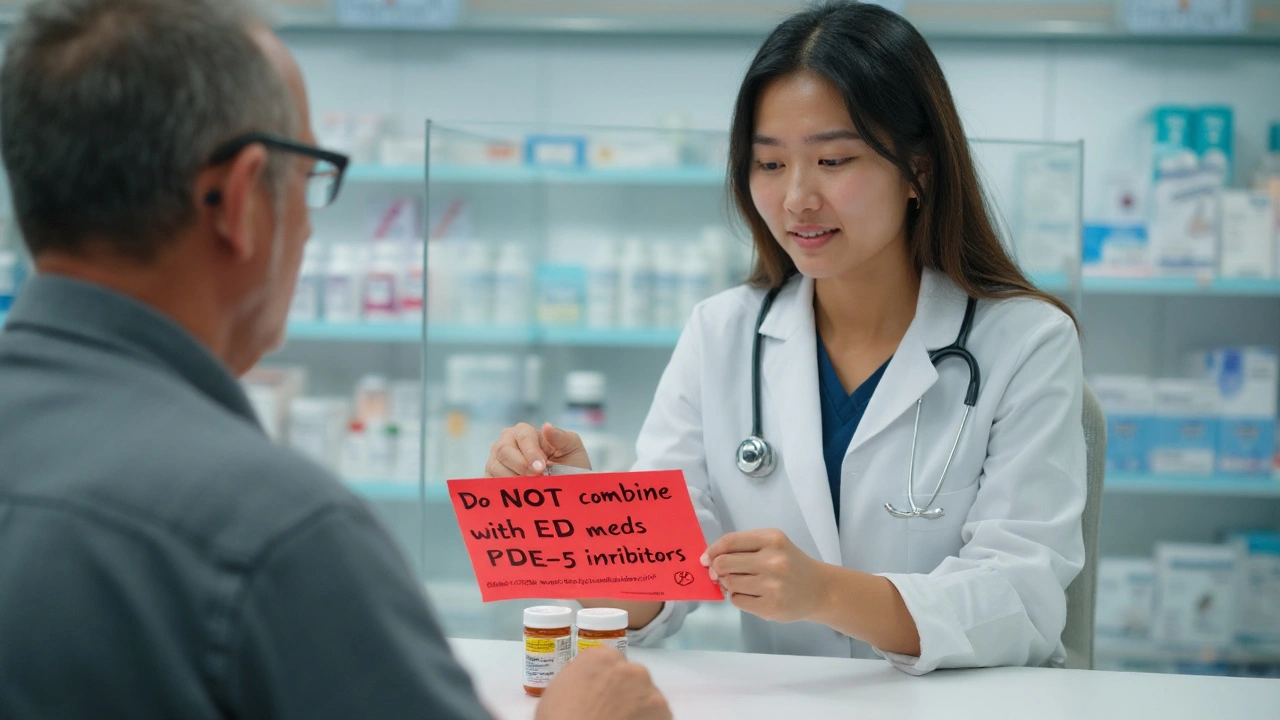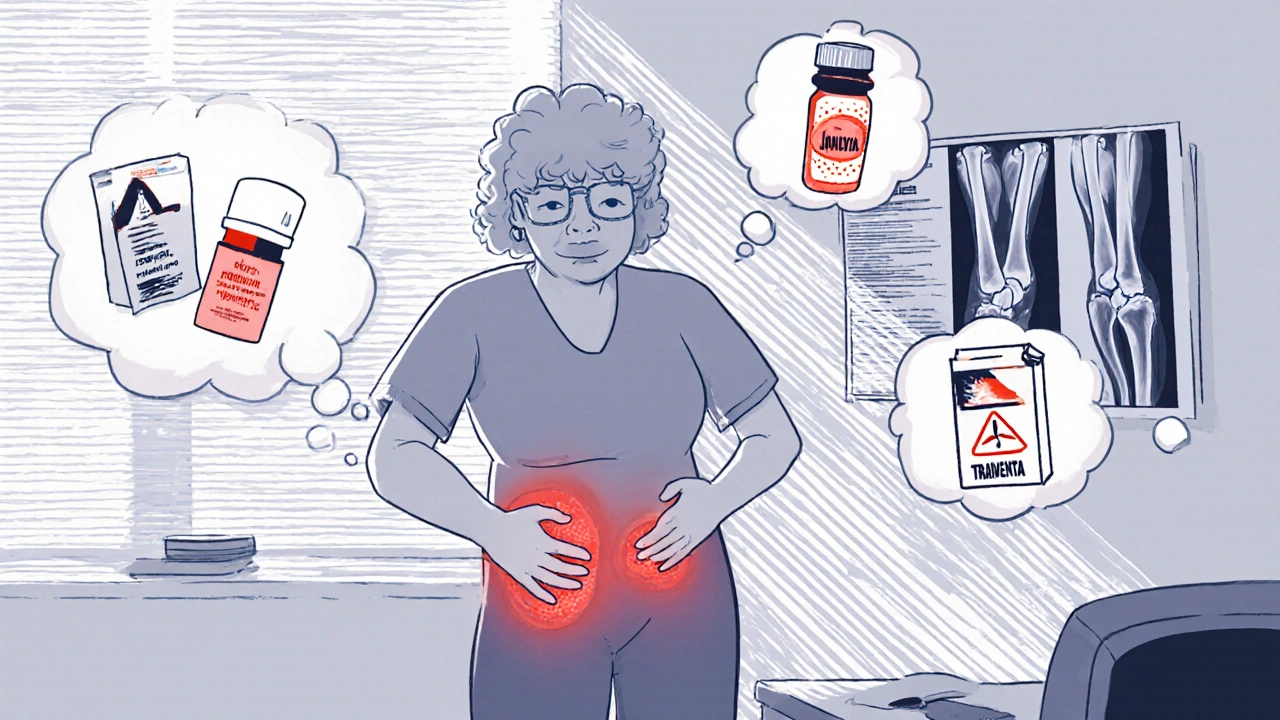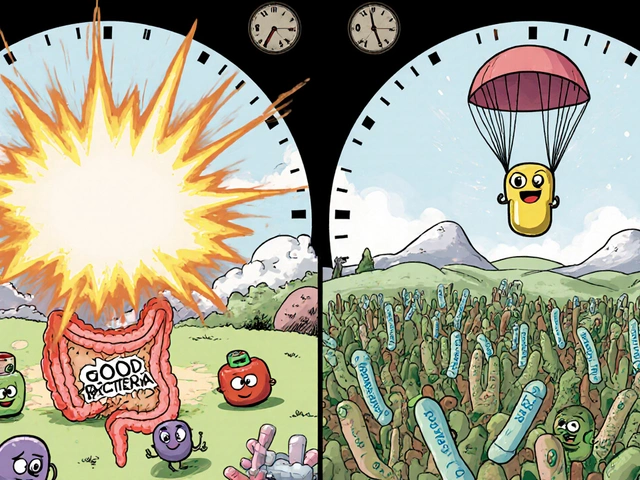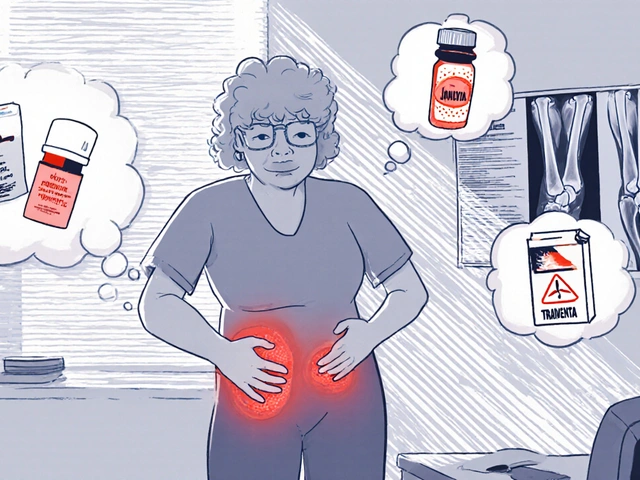If chest pain has nudged you to Google Isordil, you’re really asking three things: what does it do, how do I take it safely, and what should I watch out for? This guide answers those in plain English, with the stuff clinicians tell patients in the room but most search results skip. Expect clear dosing schedules, red-flag interactions you must avoid, and simple ways to live your life without angina running the show.
- TL;DR: Isordil (isosorbide dinitrate) is a nitrate that prevents angina by relaxing blood vessels. It’s not usually the first choice for sudden chest pain; fast GTN spray/tablets typically are.
- Stick to a “nitrate-free” window each day (usually 10-14 hours) to stop tolerance. Example: doses at 8 am and 3 pm, none at night.
- Avoid ED meds (sildenafil, tadalafil, vardenafil) or riociguat-mixing them with nitrates can cause dangerous low blood pressure.
- Common effects: headache, flushing, dizziness. Sit or lie down if light-headed. Don’t stop suddenly; talk to your clinician.
- Keep a plan for chest pain. If pain is new, severe, or doesn’t ease with your fast nitrate plan, seek emergency care.
What Is Isordil, Who It’s For, and How It Works
Isordil is the brand name for isosorbide dinitrate (ISDN), a nitrate used to prevent angina (chest pain due to reduced blood flow to the heart muscle). It relaxes smooth muscle in blood vessels, lowering the pressure the heart pumps against and reducing the heart’s oxygen demand. That’s the core trick: less strain on the heart, fewer angina episodes.
There are two common ways nitrates are used:
- Prevention (background control): regular tablets-immediate-release (IR) or modified/extended-release (MR/ER)-to reduce how often angina happens.
- Fast relief: a rapid nitrate taken when chest pain strikes, usually glyceryl trinitrate (GTN) sublingual spray or tablet in the UK. Some regions use sublingual ISDN 5 mg, but GTN is more common for rapid relief.
Important nuance: in most modern UK and US practice, isosorbide dinitrate tablets are mainly for prevention. For sudden chest pain, you’ll typically reach for your GTN spray/tablet if your clinician has prescribed it. If your label says sublingual isosorbide dinitrate for fast relief, follow that plan-protocols vary by country and prescriber.
Where does it fit among angina medicines? Guidelines put lifestyle changes, beta-blockers or calcium-channel blockers, and fast-acting nitrates front and center. Long-acting nitrates (ISDN or isosorbide mononitrate) are added when symptoms persist or when first-line drugs aren’t suitable. In heart failure with reduced ejection fraction, a fixed combination of hydralazine plus ISDN has proven benefits for some patients (especially when ACE inhibitors/ARBs aren’t tolerated or in certain ethnic groups), but that’s a different dosing setup from angina prevention.
I live in Bristol, and I’ve seen how practical tweaks matter more than clever jargon: timing doses, avoiding falls from dizziness, and having a simple chest-pain plan you can follow in the middle of a busy day or a school run with my son, Corin. That’s the headspace this guide is written in.
Mechanism in one line: nitrates donate nitric oxide, which activates guanylate cyclase in vascular smooth muscle, increasing cGMP and causing venodilation (and some arterial dilation). The result is reduced preload/afterload and improved myocardial oxygen balance.
Tolerance is real: the body adapts to continuous nitrate exposure within a day or two. That’s why you’ll see schedules with a daily “nitrate-free” window-often overnight-to keep the drug working.
| Formulation | Typical use | Common strengths | Onset | Duration | Notes |
|---|---|---|---|---|---|
| Isosorbide dinitrate IR tablets | Prevention of angina | 5, 10, 20, 30, 40 mg | 20-40 min | 4-6 h | 2-3 doses/day with 10-14 h nitrate-free window |
| Isosorbide dinitrate MR/ER | Prevention (longer coverage) | 40, 60 mg | ~1 h | 8-14 h | Once or twice daily; still needs nitrate-free interval |
| Isosorbide dinitrate sublingual | Acute angina (varies by region) | 5 mg | 2-5 min | 1-2 h | GTN is usually first choice for acute relief in UK |
| Glyceryl trinitrate (GTN) spray/tab | Acute angina relief | 400 mcg spray; 300-500 mcg tab | 1-2 min | 20-30 min | Often carried for quick relief; separate from ISDN prevention |
Who should avoid it or use with extra care:
- People taking PDE5 inhibitors (sildenafil, vardenafil, tadalafil) or riociguat-contraindicated due to severe hypotension risk.
- Marked low blood pressure, shock, or acute right ventricular infarction-nitrates can drop preload too much.
- Severe anaemia or raised intracranial pressure-specialist advice needed.
- Hypertrophic obstructive cardiomyopathy-can worsen outflow obstruction.
- Pregnancy/breastfeeding-often used if benefits outweigh risks; discuss with your cardiology/obstetric team.
Evidence touchpoints: BNF (2025), NICE CKS Stable Angina (updated 2024-2025), ACC/AHA 2023 Chronic Coronary Disease Guideline, and the FDA Prescribing Information for Isordil all back the key points above, including the need for a nitrate-free interval and the hard stop on PDE5 + nitrate combinations.

How to Take It Safely: Dosing, Timing, Interactions, and Real-Life Tips
This is the section to bookmark. It’s the practical “how.” Speak with your clinician before changing anything-this guide supports, not replaces, medical advice.
Step-by-step dosing setup
- Confirm your exact product. Check if you have IR tablets or MR/ER. If your box says “modified-release” or “once daily,” don’t crush or split unless the leaflet says you can.
- Build a schedule with a nitrate-free window (10-14 h). Example for daytime angina: IR 20 mg at 8 am and 3 pm; no evening or night dose. For MR/ER, your prescriber may set once in the morning (e.g., 60 mg) or morning + early afternoon to allow an overnight nitrate-free interval.
- First doses: sit down. Dizziness and flushing are common at the start. Take the first few doses at home, not on a crowded bus or before cycling up a hill.
- Headache plan. Nitrate headaches are common and often ease after a few days. Paracetamol usually helps. Avoid excessive alcohol, which can worsen flushing and headaches.
- Missed dose? Take it when you remember unless you’re close to the next scheduled dose. Don’t double up. Keep your nitrate-free gap intact.
- Don’t stop suddenly. Abrupt withdrawal can unmask rebound angina. If you’re doing well and want to simplify meds, talk about tapering.
Interactions that matter
- Absolute no-go: PDE5 inhibitors (sildenafil, tadalafil, vardenafil) and riociguat. Time gaps matter: typical advice is avoid nitrates within at least 24 hours of sildenafil or vardenafil, and at least 48 hours of tadalafil. If you’ve used an ED pill, skip your nitrate and speak to a clinician for individualized advice.
- Alcohol: intensifies blood pressure drops and dizziness. If you drink, do it lightly and away from dose times.
- Other BP-lowering meds: beta-blockers, calcium-channel blockers, ACE inhibitors/ARBs, diuretics-these can add to low BP. That’s often fine, but stand up slowly and watch for light-headedness.
- Ergot drugs (for migraine): may interact with nitrates; check with your prescriber.
- Phosphodiesterase type 5 for pulmonary hypertension: same class risk as ED meds; again, avoid with nitrates.
Side effects: what’s common, what’s serious
- Common: headache, flushing, dizziness, nausea. Usually settle in days to weeks.
- Less common: palpitations, fainting, rash.
- Serious-get urgent help: fainting with injury, chest pain not easing with your fast nitrate plan, signs of a severe allergic reaction, or severe shortness of breath.
Chest pain plan (day-to-day)
- Stop, sit, and take your fast-acting nitrate as instructed (often GTN spray/tab) if you’ve been prescribed one.
- If pain persists after the prescribed repeat steps (for GTN, often up to 3 doses spaced a few minutes apart), seek emergency care.
- If you’re getting more frequent pain, or pain with less effort (say, walking flat to the corner shop), contact your GP or cardiology team promptly.
Special situations
- Heart failure regimen (Hydralazine + ISDN): dosing is different (e.g., ISDN 20-40 mg three times daily with hydralazine). Don’t mix this up with angina prevention schedules.
- Hot weather, saunas, heavy exercise: blood pressure can drop faster. Hydrate, rise slowly, and consider shifting your dose timing after speaking with your clinician.
- Illness with vomiting/diarrhoea: dehydration plus nitrates can mean wobbly blood pressure. If you can’t keep fluids down, seek medical advice.
- Driving/operating tools: if you feel dizzy or faint, don’t drive. Review dose timing or strength with your prescriber.
- Pregnancy and breastfeeding: use only with specialist advice. Nitrates are sometimes used when benefits outweigh risks.
- Older adults: start low, go slow. Falls are a real risk. Add night lights at home and avoid sudden standing.
Storage and handling
- Keep tablets dry, at room temperature, and away from kids’ reach (child-safe caps aren’t perfect).
- Modified-release tablets: don’t crush. If swallowing is hard, ask about alternative formulations.
- Travel: carry a spare strip in hand luggage. Heat in car glove compartments can degrade meds.
Evidence touchpoints: BNF (2025) details dose ranges and nitrate-free intervals; NICE CKS outlines angina care pathways; ACC/AHA 2023 guidelines emphasize symptom control and risk reduction; MHRA and FDA labels confirm contraindications with PDE5 inhibitors and riociguat.

Checklists, Scenarios, Alternatives, and Quick Answers
Here’s the quick-reference section you’ll actually use at 7:30 am when you’re trying to get out the door.
Safety checklist before you start
- Know the exact product (IR vs MR/ER) and strength.
- Write your dose times to include a 10-14 h nitrate-free gap.
- List all your meds. Circle any ED pills (sildenafil/tadalafil/vardenafil) or riociguat-talk to your clinician before taking your nitrate.
- Plan for headaches (paracetamol at home) and dizziness (sit for first doses).
- Have your fast nitrate plan (usually GTN spray/tablets) if prescribed, and know when to seek emergency care.
While on it-weekly check
- Angina less often, or same? If worse, don’t wait-book a review.
- Any fainting or near-fainting? Tell your clinician; dose timing or strength may need tweaks.
- Still using ED meds? Revisit that plan. Combination with nitrates is unsafe.
- Pill routine still fits your day? Morning/school run/gym times change-your schedule can, too.
Scenarios and what to do
- I took sildenafil last night and it’s 8 am-time for my nitrate? Don’t take the nitrate yet. The typical separation is at least 24 h for sildenafil/vardenafil (48 h for tadalafil). Call your prescriber for personalised advice, especially if you’re symptomatic.
- I’m still getting angina at night: your nitrate-free window may be at the wrong time for your symptoms. Ask about shifting doses earlier in the day and using other agents at night.
- Headaches are rough: ask about lowering the dose and titrating up; use paracetamol; avoid alcohol near dose times. Headaches often ease after the first week.
- I keep forgetting my afternoon dose: ask whether a modified-release once-daily option is suitable, or set alarms tied to daily routines (post-lunch, school pickup).
- Surgery or dental work coming up: bring your meds list. Anaesthesia and pain meds can also lower blood pressure.
Alternatives and how they compare
- Isosorbide mononitrate (ISMN): similar effect with longer action; often once daily. Many UK patients use ISMN for prevention.
- Glyceryl trinitrate (GTN): fast relief in minutes; not for prevention. Keep it on you if prescribed.
- Beta-blockers: first-line prevention in many cases; slow the heart, reduce demand.
- Calcium-channel blockers (e.g., amlodipine, diltiazem): useful if beta-blockers don’t suit or as add-on.
- Ranolazine or ivabradine: add-ons in selected patients when symptoms persist despite standard therapy.
Cost and availability
- ISDN is widely available as a generic. Brand names vary by country. In the UK, many patients are on generics via NHS prescriptions.
- If cost or supply is an issue, ask your pharmacist about equivalent strengths or switching to ISMN per your prescriber’s advice.
Mini‑FAQ
- Is Isordil the same as isosorbide mononitrate? No. Both are nitrates, but they’re different drugs with different dosing and timing. ISMN often has simpler once-daily options.
- Can I cut the tablets? Only immediate-release tablets that aren’t scored can sometimes be split; modified-release tablets usually must not be cut. Check the leaflet or ask your pharmacist.
- How quickly will I feel a benefit? Preventive benefit is about fewer angina episodes over days to weeks. You won’t “feel” prevention in the moment the way you do with a GTN spray.
- Can I drink alcohol? Light drinking away from dose times may be fine, but alcohol can worsen dizziness and headache. See how your body responds and keep it modest.
- Why do I still need a GTN spray if I’m on ISDN daily? Because prevention doesn’t stop every episode. GTN is your quick backup for breakthrough pain.
- What if I accidentally took an ED pill and my chest hurts? Don’t take a nitrate. Sit or lie down. Seek urgent medical help.
When to get help
- Chest pain that is new, severe, or doesn’t ease with your fast nitrate plan.
- Fainting, blackouts, or injuries from dizziness.
- Worsening breathlessness, swelling, or fatigue if you also have heart failure.
- Rash, swelling of lips/tongue, or severe headache you can’t control.
Credibility snapshot: The dosing ranges, contraindications, and nitrate-free interval are consistent with the British National Formulary (2025), NICE Clinical Knowledge Summary for Stable Angina (updated 2024-2025), ACC/AHA 2023 Chronic Coronary Disease Guideline, and the FDA Prescribing Information for Isordil. The warning about PDE5 inhibitors and riociguat comes from MHRA/FDA safety communications and product labels.
If this reads like advice from a neighbour who actually listens, that’s on purpose. I write from Bristol life-busy mornings, school bags, and the hill up to Clifton-that’s where medicine has to work. Make your schedule fit your day, keep your fast-acting plan handy, and loop in your clinician when something changes. That’s how you get the benefit without the drama.



